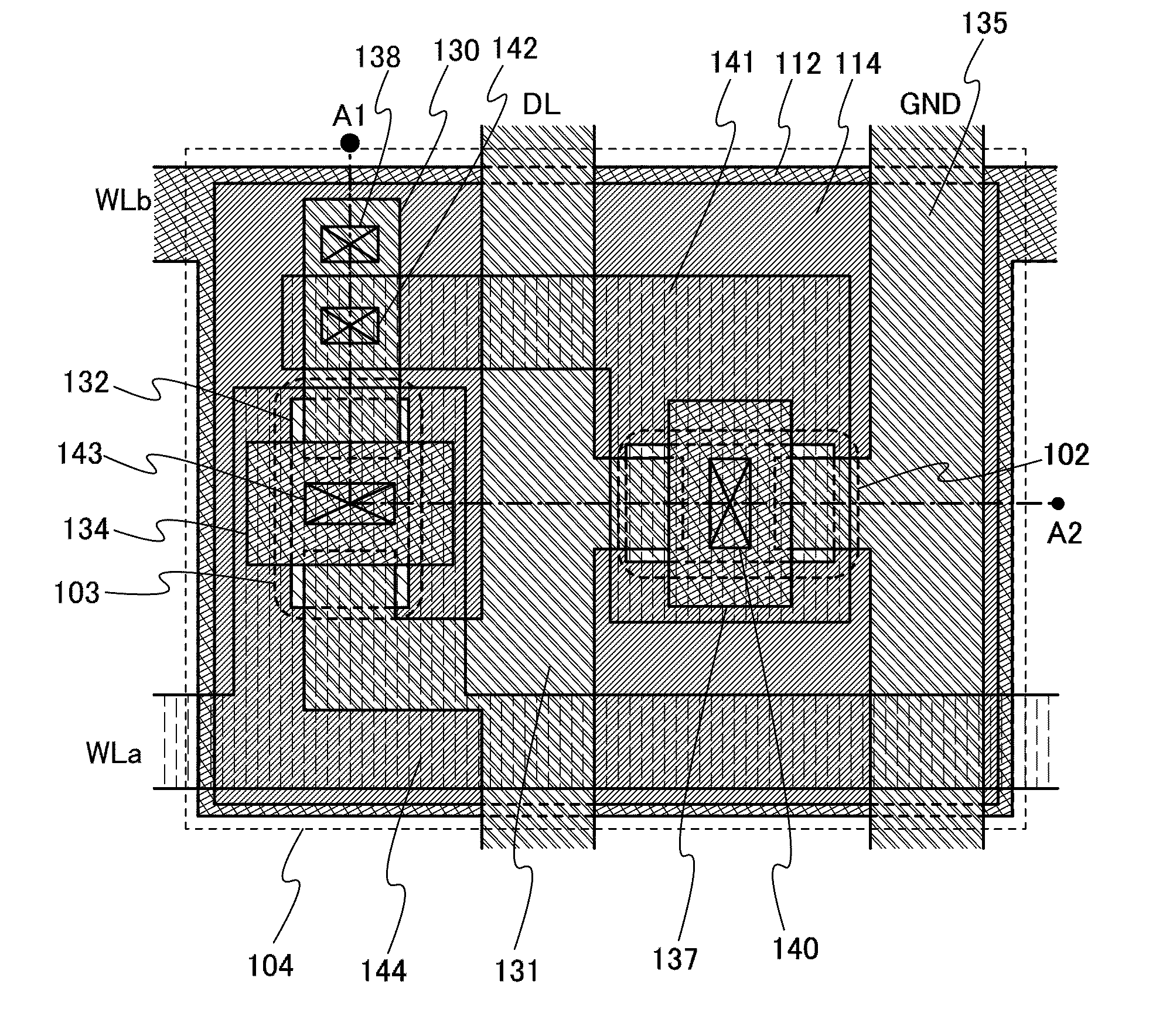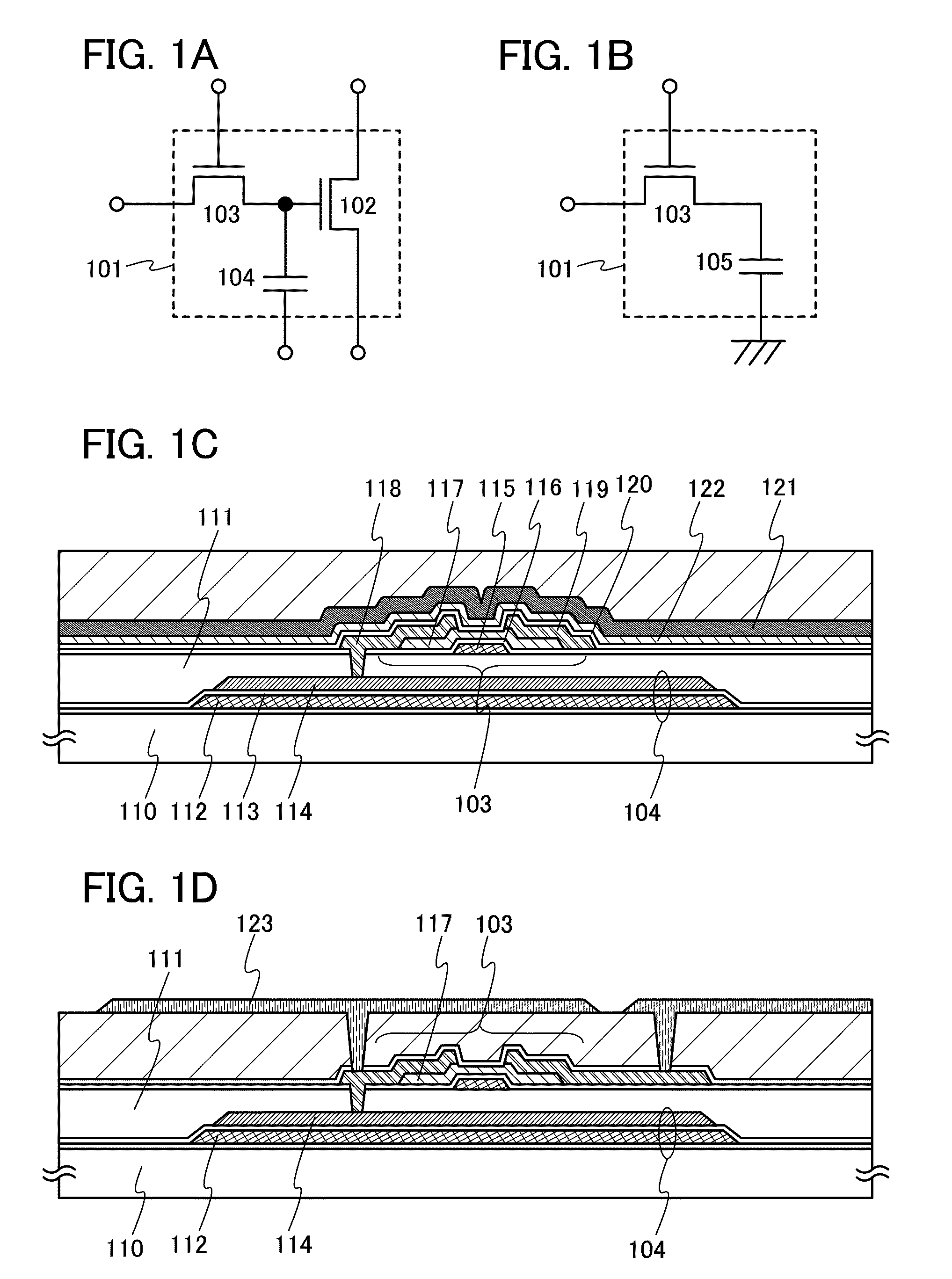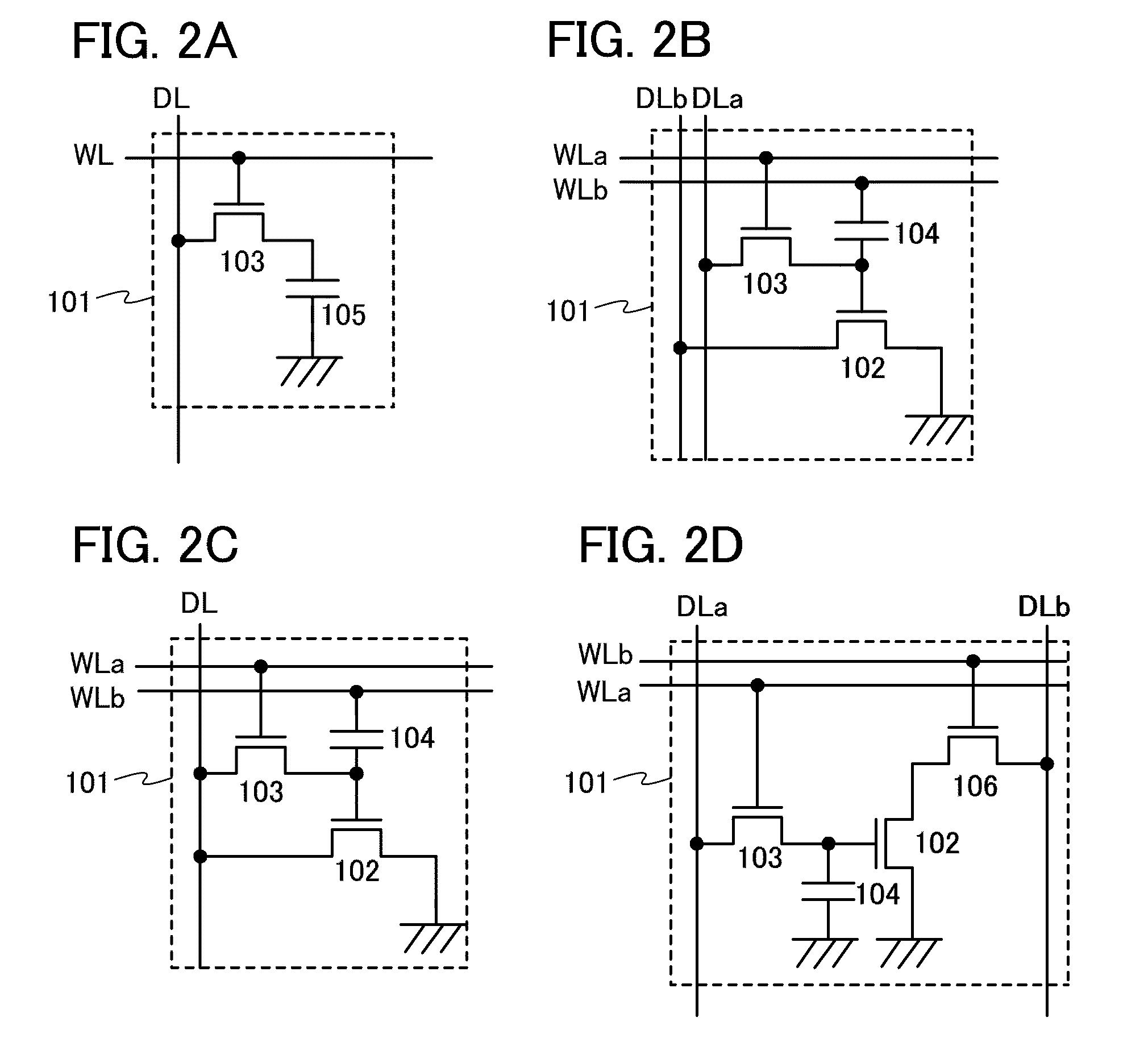Semiconductor device with light-blocking layers
a semiconductor and memory element technology, applied in the direction of capacitors, digital storage, instruments, etc., can solve the problems of difficult capacitors, achieve the effects of preventing the leakage of charge from the memory element, preventing the degradation of the characteristics of the transistor due to light, and suppressing the shift of the threshold voltag
- Summary
- Abstract
- Description
- Claims
- Application Information
AI Technical Summary
Benefits of technology
Problems solved by technology
Method used
Image
Examples
embodiment 1
[0040]FIG. 1A illustrates a circuit diagram of a structure of a memory cell in a memory device according to one embodiment of the present invention, as an example. In the circuit diagram illustrated in FIG. 1A, a memory cell 101 includes a transistor 102 serving as a memory element, a transistor 103 serving as a switching element, and a capacitor 104. In the transistor 102 serving as a memory element, charge is accumulated in a gate capacitor formed between a gate electrode and an active layer, whereby data is stored.
[0041]Note that the memory cell 101 may further include another circuit element such as a transistor, a diode, a resistor, a capacitor, or an inductor as needed.
[0042]The terms of the “source electrode” and the “drain electrode” included in the transistor interchange with each other depending on the polarity of the transistor or difference between the levels of potentials applied to the respective electrodes. In general, in an n-channel transistor, an electrode to which...
embodiment 2
[0095]In this embodiment, one example of a specific structure of a memory cell included in a memory device according to one embodiment of the present invention will be described. Note that in this embodiment, the structure of the memory cell having the circuit structure illustrated in FIG. 2C will be described as an example.
[0096]FIG. 3 is an example of a top view of the memory cell. Note that in FIG. 3, an insulating film other than a light-blocking insulating film is omitted in order to clarify the structure of the memory cell. A cross-sectional view taken along dotted line A1-A2 in FIG. 3 is illustrated in FIG. 4.
[0097]The memory cell illustrated in FIG. 3 and FIG. 4 includes, over the substrate 110 having an insulating surface, the transistor 102, the transistor 103, and the capacitor 104. The capacitor 104 formed over the substrate 110 is covered with the insulating film 111 and the transistor 102 and the transistor 103 are formed over the insulating film 111. The capacitor 104...
embodiment 3
[0134]In this embodiment, an example of a structure of the transistor 103 serving as a switching element, which is different from the structure illustrated in FIG. 1D, will be described.
[0135]An example of a cross-sectional view of the transistor 103 and the capacitor 104 is illustrated in FIG. 5A. Although FIG. 5A illustrates a cross-sectional structure of the memory cell 101 illustrated in FIG. 1A, the transistor 103 and the capacitor 105 in FIG. 1B can have structures similar to those illustrated in FIG. 5A.
[0136]In the cross-sectional view illustrated in FIG. 5A, as in FIG. 1D, the capacitor 104 and the transistor 103 are formed over the substrate 110 having an insulating surface, and the capacitor 104 and the transistor 103 overlap with each other with the insulating film 111 interposed therebetween.
[0137]A specific structure of the capacitor 104 is the same as that illustrated in FIG. 1D. FIG. 5A is different from FIG. 1D in that the transistor 103 has a channel protective str...
PUM
 Login to View More
Login to View More Abstract
Description
Claims
Application Information
 Login to View More
Login to View More - R&D
- Intellectual Property
- Life Sciences
- Materials
- Tech Scout
- Unparalleled Data Quality
- Higher Quality Content
- 60% Fewer Hallucinations
Browse by: Latest US Patents, China's latest patents, Technical Efficacy Thesaurus, Application Domain, Technology Topic, Popular Technical Reports.
© 2025 PatSnap. All rights reserved.Legal|Privacy policy|Modern Slavery Act Transparency Statement|Sitemap|About US| Contact US: help@patsnap.com



